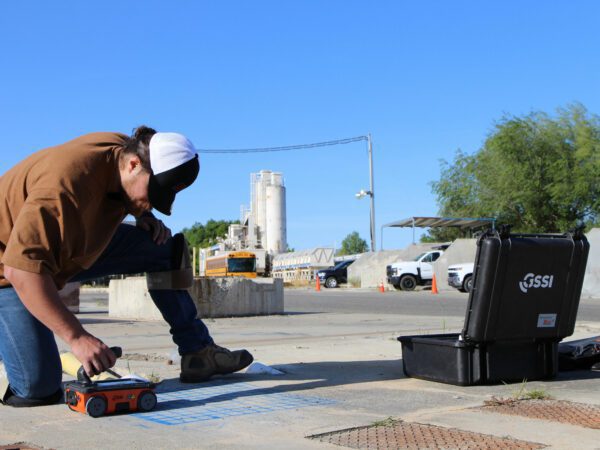Enhancing Task Preparation and Execution With Advanced Concrete Scanning Strategies
In the world of project planning and insight, implementation and precision are crucial components that can make the difference between success and troubles. Advanced concrete scanning methods have actually arised as a sophisticated tool established to boost the criteria of job monitoring within the construction industry.
Advantages of Advanced Concrete Scanning Strategies

Improved Accuracy in Project Assessments
Enhancing task analyses with sophisticated concrete scanning methods significantly enhances the precision and reliability of construction examinations. By utilizing innovative scanning innovations such as ground-penetrating radar (GPR) and 3D imaging, project groups can now obtain detailed understandings into the condition of concrete frameworks, determining potential problems or weaknesses that might not show up to the naked eye. This enhanced degree of accuracy in job assessments makes it possible for building professionals to make even more educated choices relating to repair and upkeep strategies, bring about enhanced overall job outcomes.
Additionally, the enhanced precision in project evaluations accomplished through innovative concrete scanning methods aids in lessening the threat of unforeseen issues during the building and construction phase. By proactively discovering concealed anomalies within concrete frameworks, such as rebar corrosion or spaces, job teams can attend to these issues early, avoiding costly hold-ups and revamp later in the job lifecycle. Inevitably, the improved accuracy in project evaluations helped with by advanced concrete scanning strategies contributes to greater effectiveness, cost-effectiveness, and quality in building and construction projects.
Early Identification of Structural Difficulties
Very early discovery of structural difficulties plays a critical function in making certain the honesty and safety of concrete structures throughout the building procedure. Recognizing possible concerns at a beginning permits timely intervention, avoiding costly rework, schedule delays, and safety risks. Advanced concrete scanning methods, such as ground-penetrating radar (GPR) and 3D imaging, enable job teams to uncover covert problems, voids, reinforcement layout disparities, and various other abnormalities that could compromise the structure's security.
By applying these strategies throughout the preparation and implementation phases, construction professionals can proactively resolve architectural challenges before they rise right into major browse around this web-site problems. For circumstances, spotting poor concrete cover over reinforcement bars beforehand can avoid corrosion and architectural weakening over time - RainierGPR Service Areas. Furthermore, determining variations in concrete thickness or thickness can assist optimize product usage and ensure consistent stamina buildings throughout the structure
Inevitably, early identification of architectural challenges via sophisticated concrete scanning not only enhances the total high quality and resilience of the building and construction however also adds to a safer built environment for passengers and users.
Boosted Safety And Security Procedures in Construction
The execution of robust security procedures is critical in the building sector to mitigate dangers and safeguard the wellness of employees and stakeholders. Building websites are naturally dangerous atmospheres, with possible risks ranging from drops and devices malfunctions to structural failures. To boost safety and security actions, building and construction companies are significantly adopting technological advancements such as wearable tools that keep track of workers' vital indications and find potential health and wellness concerns in real-time. Furthermore, using drones for site monitoring permits normal safety evaluations without putting workers in damage's means. Safety training programs have also developed to include online reality simulations that offer hands-on experience in taking care of emergency situation scenarios. In addition, the assimilation of expert system in safety monitoring systems makes it possible for aggressive recognition of prospective dangers, enabling for timely interventions. By focusing on safety and security via the unification of innovative innovations and detailed training programs, building projects can significantly reduce crashes and develop a safe working environment for all entailed - RainierGPR Service Areas.
Streamlining Task Monitoring Processes
To maximize operational effectiveness and guarantee job success in the building why not look here and construction sector, an emphasis on enhancing task administration processes is essential. By executing effective job monitoring procedures, building jobs can minimize hold-ups, lower expenses, and boost general efficiency.

Conclusion
In conclusion, the utilization of advanced concrete scanning strategies supplies many benefits for project preparation and implementation. These methods offer improved precision in task evaluations, early identification of structural obstacles, improved precaution in building, and streamlined task management processes. Incorporating these methods into job workflows can inevitably bring about more successful and reliable results in construction tasks.
Ultimately, the boosted accuracy in project evaluations helped with by advanced concrete scanning methods contributes to higher efficiency, cost-effectiveness, and quality in building projects. RainierGPR Service Areas.
To enhance operational effectiveness and ensure job success in the construction sector, a focus on improving project monitoring processes is important. By applying efficient project administration procedures, building projects can lessen hold-ups, decrease prices, and improve general performance. By improving project administration processes through innovation integration, clear communication, and data-driven techniques, construction jobs can achieve higher efficiency, cost-effectiveness, and effective results.
These strategies give improved precision in job evaluations, very early recognition of architectural challenges, improved security steps in construction, and streamlined task administration procedures.